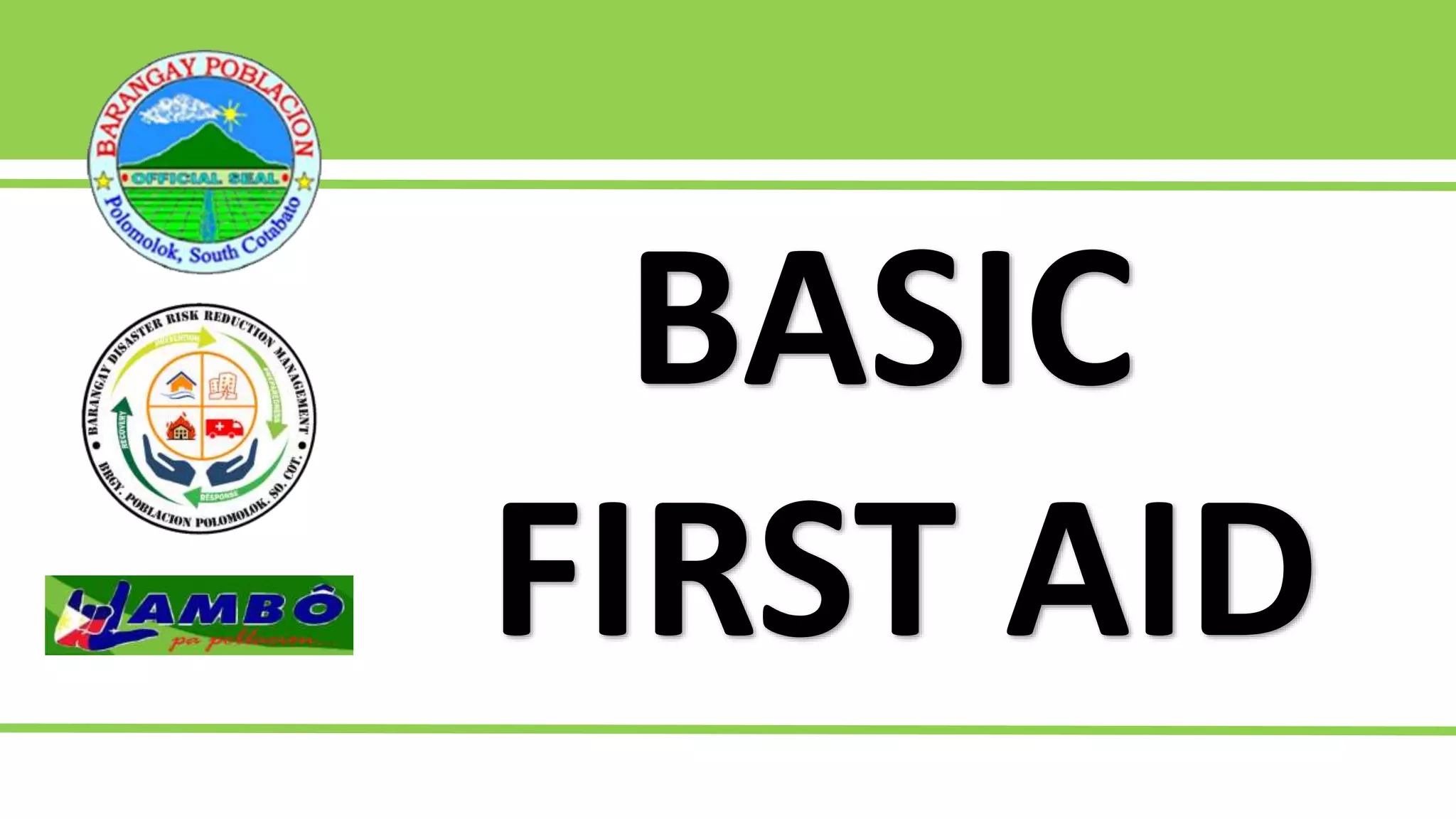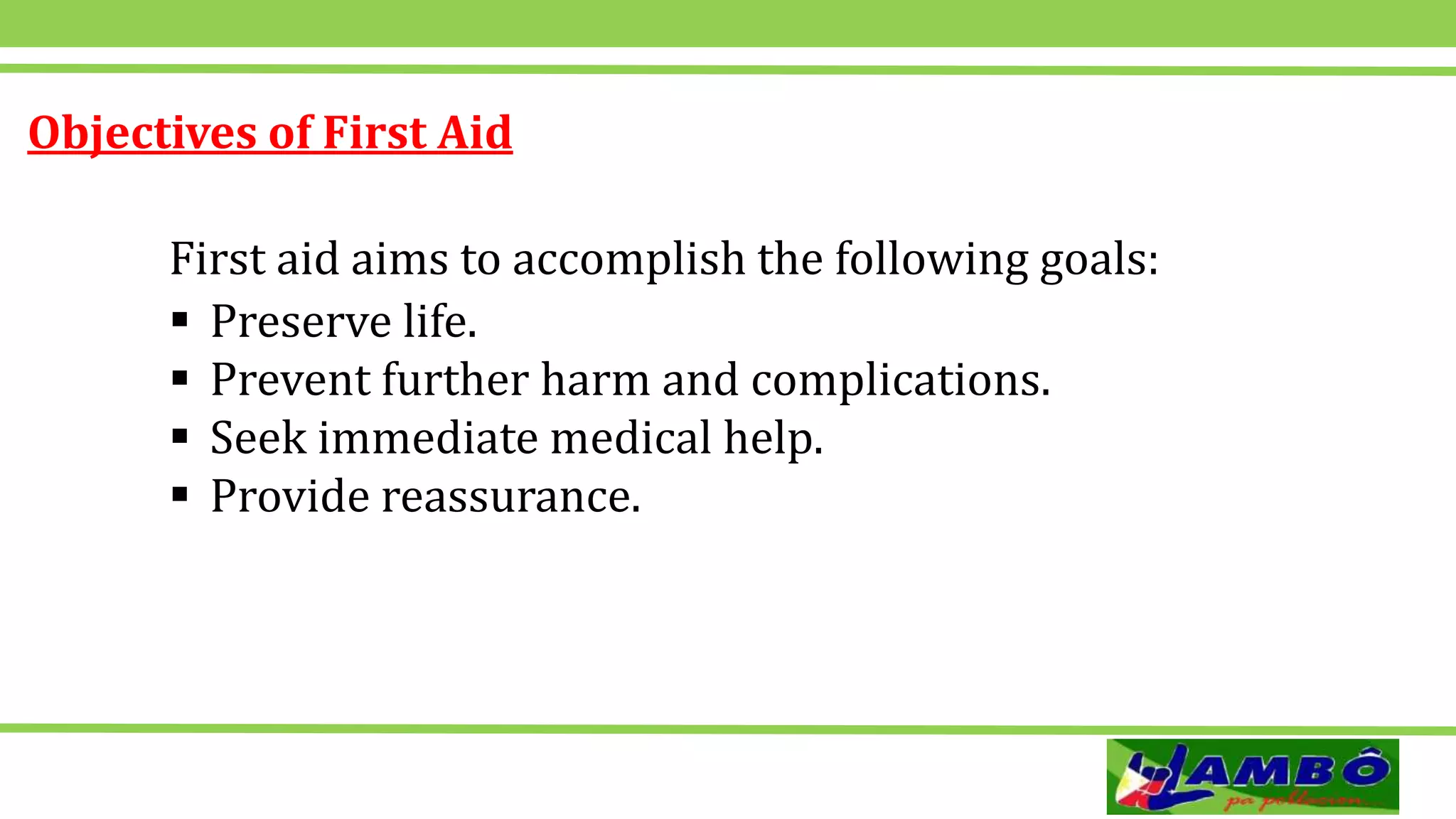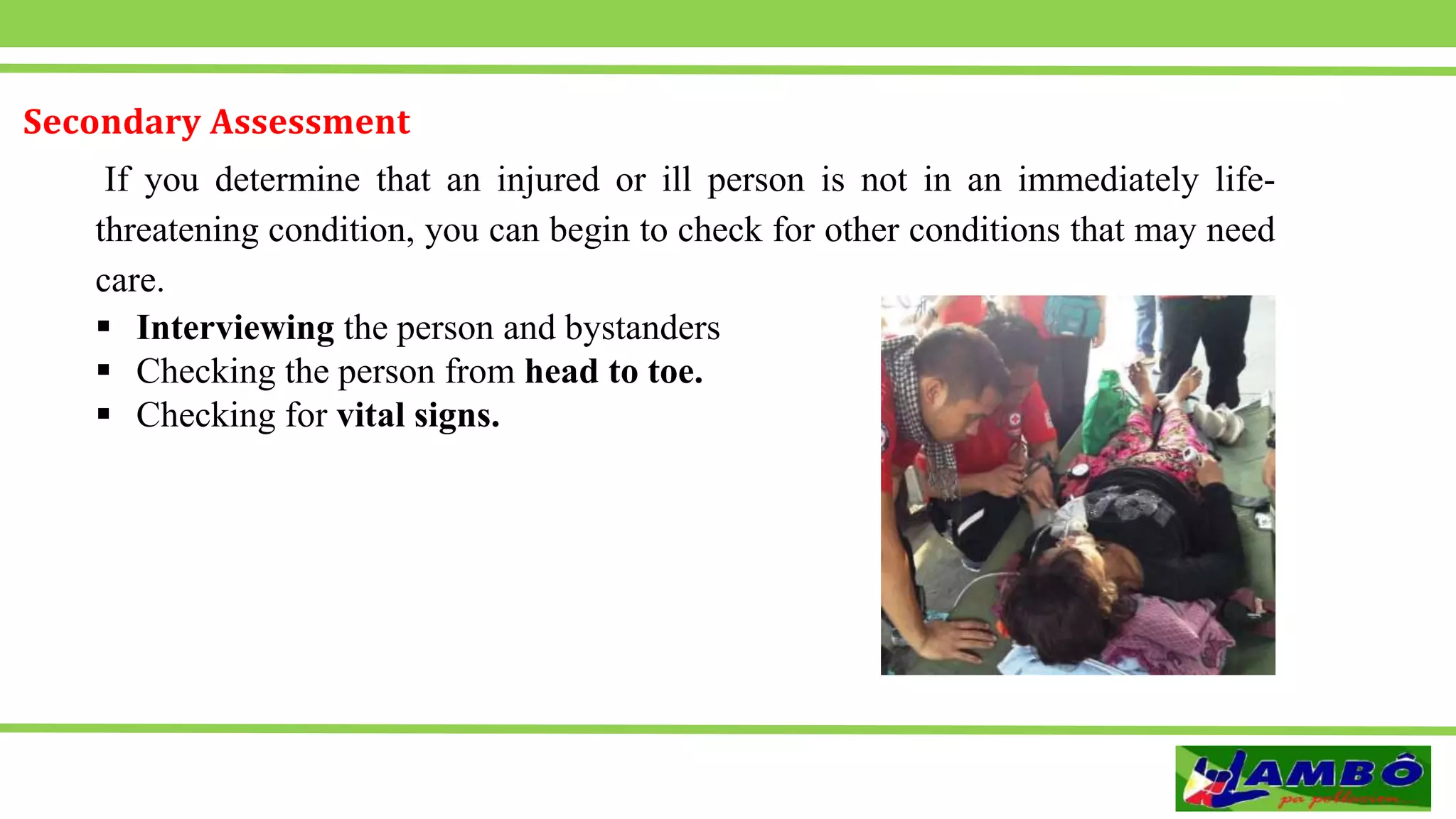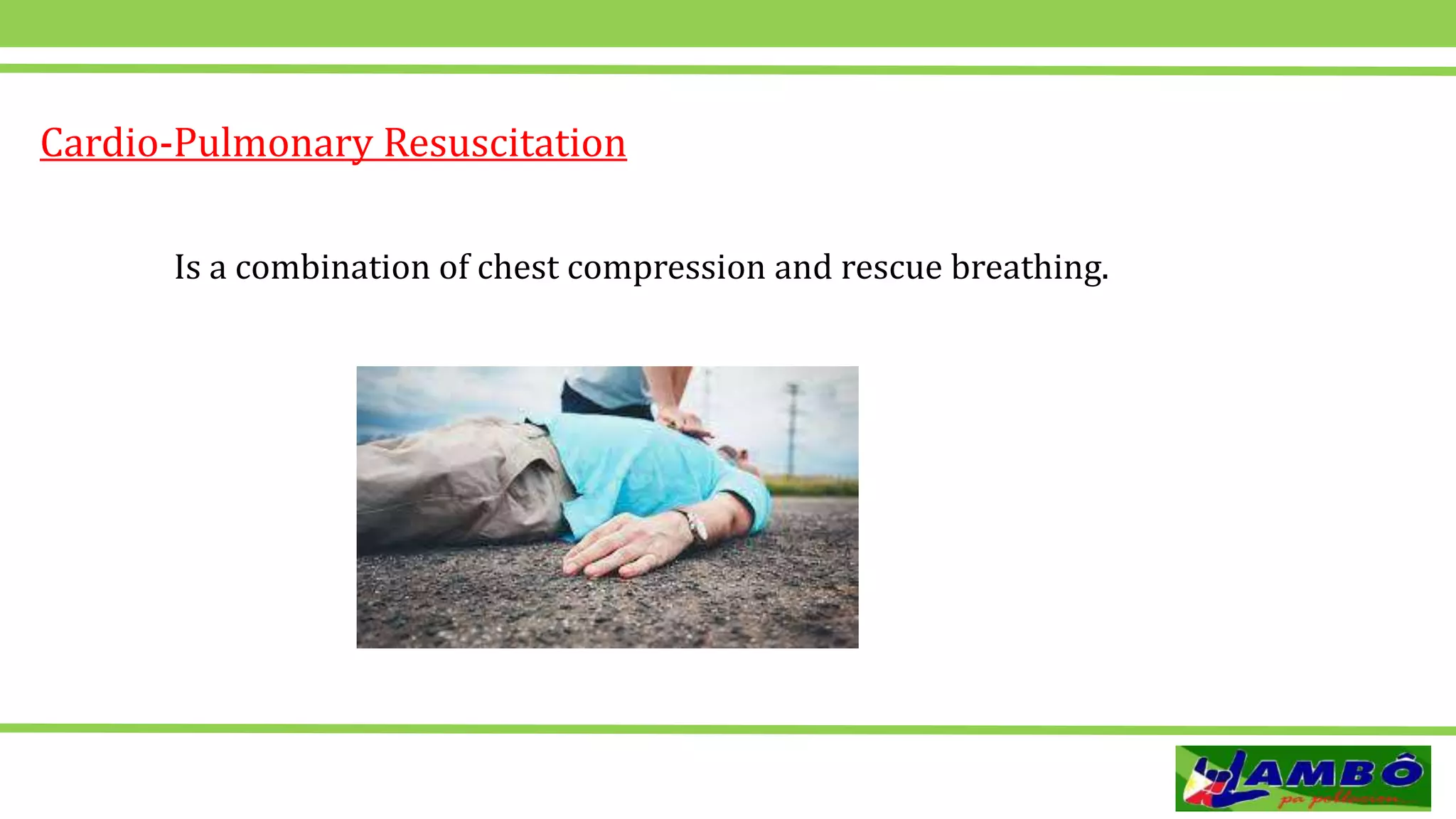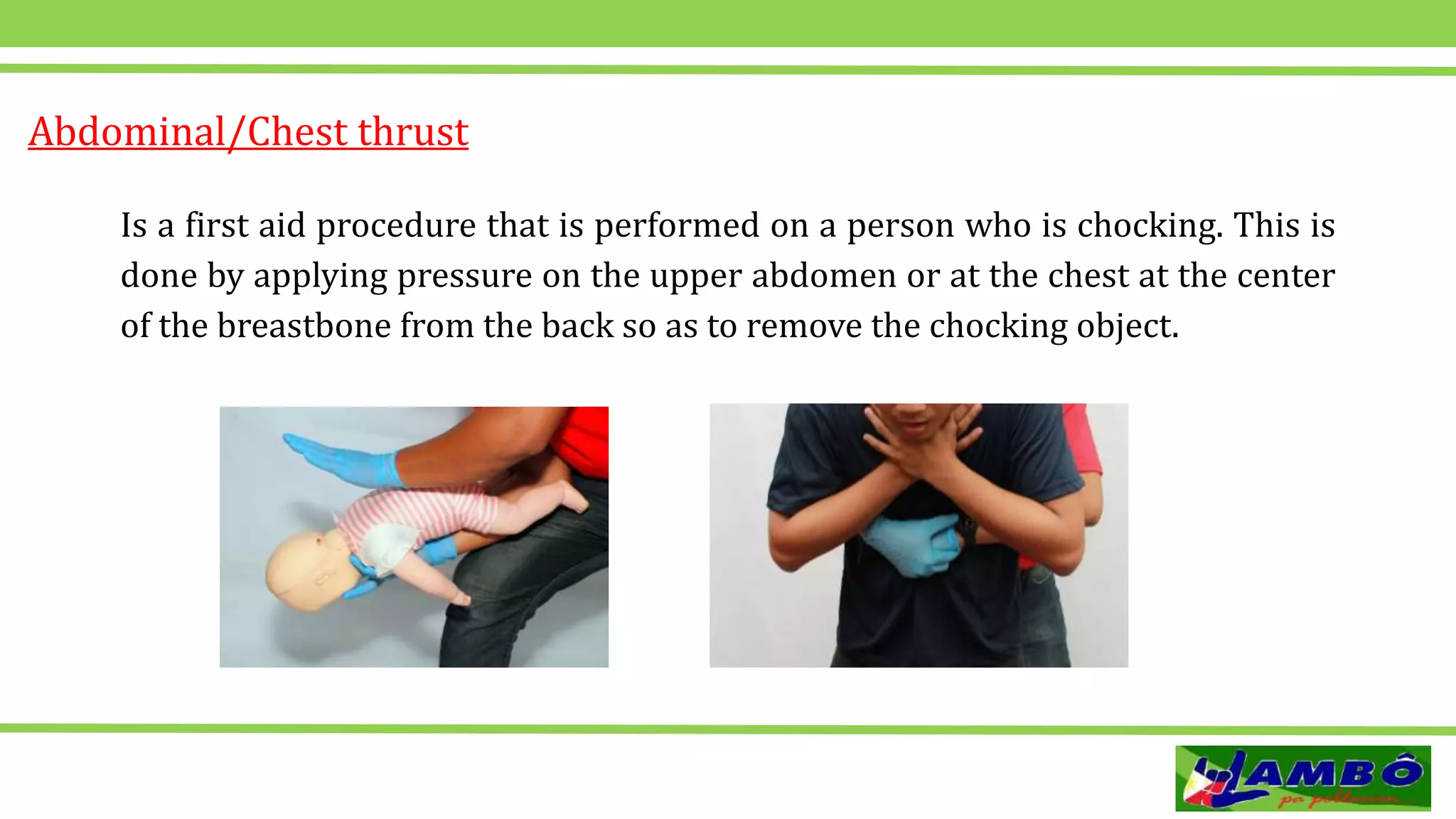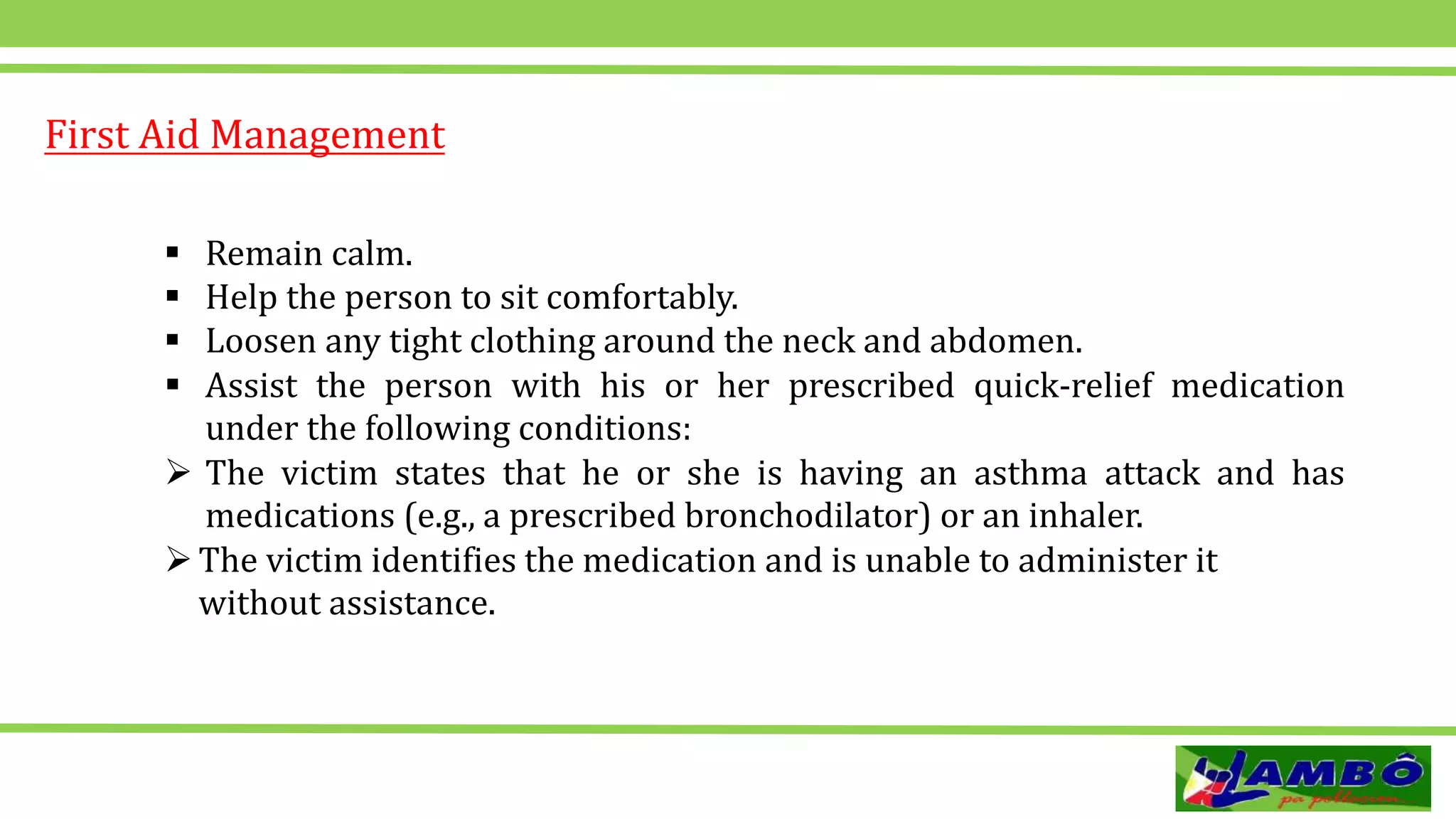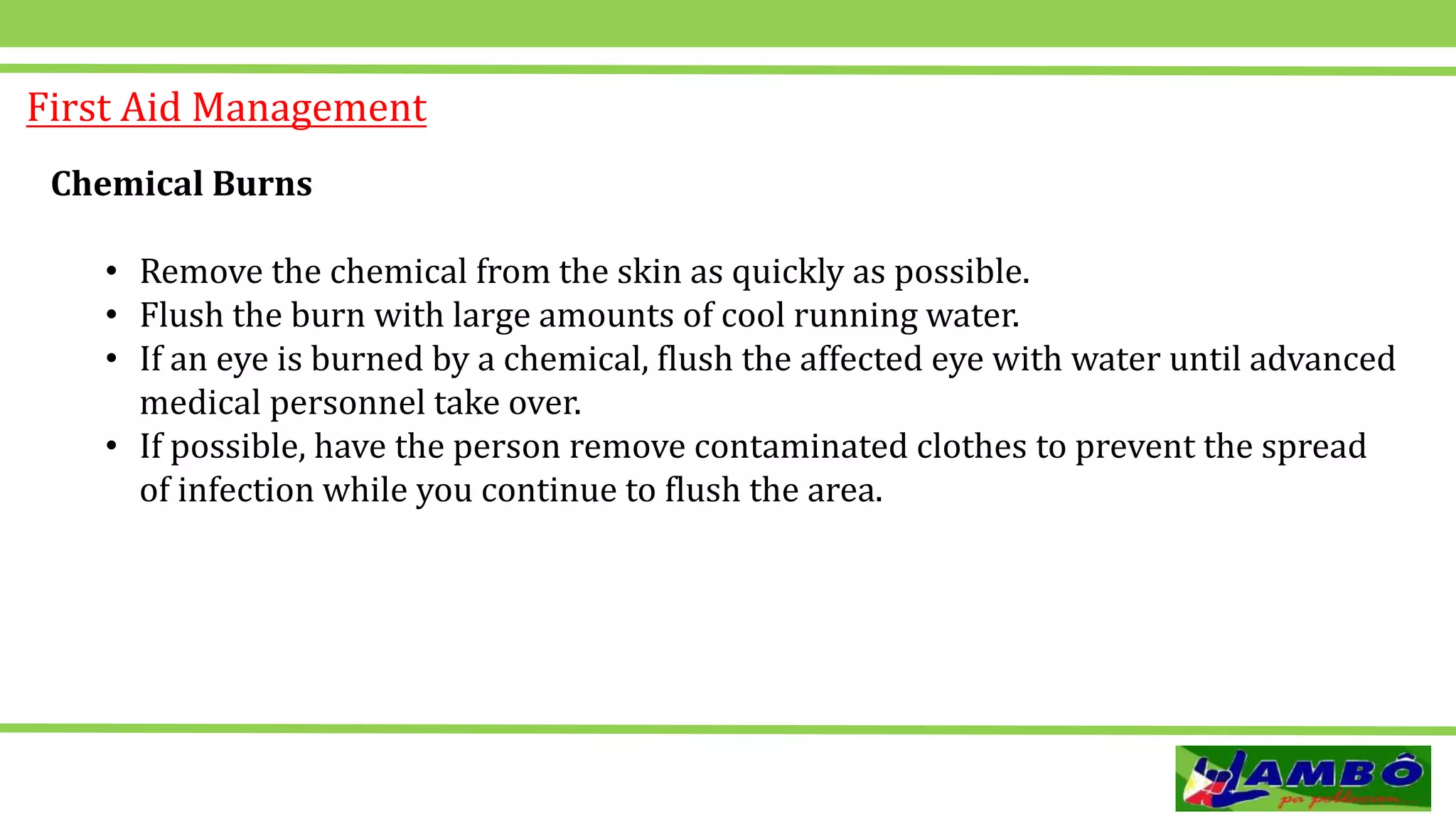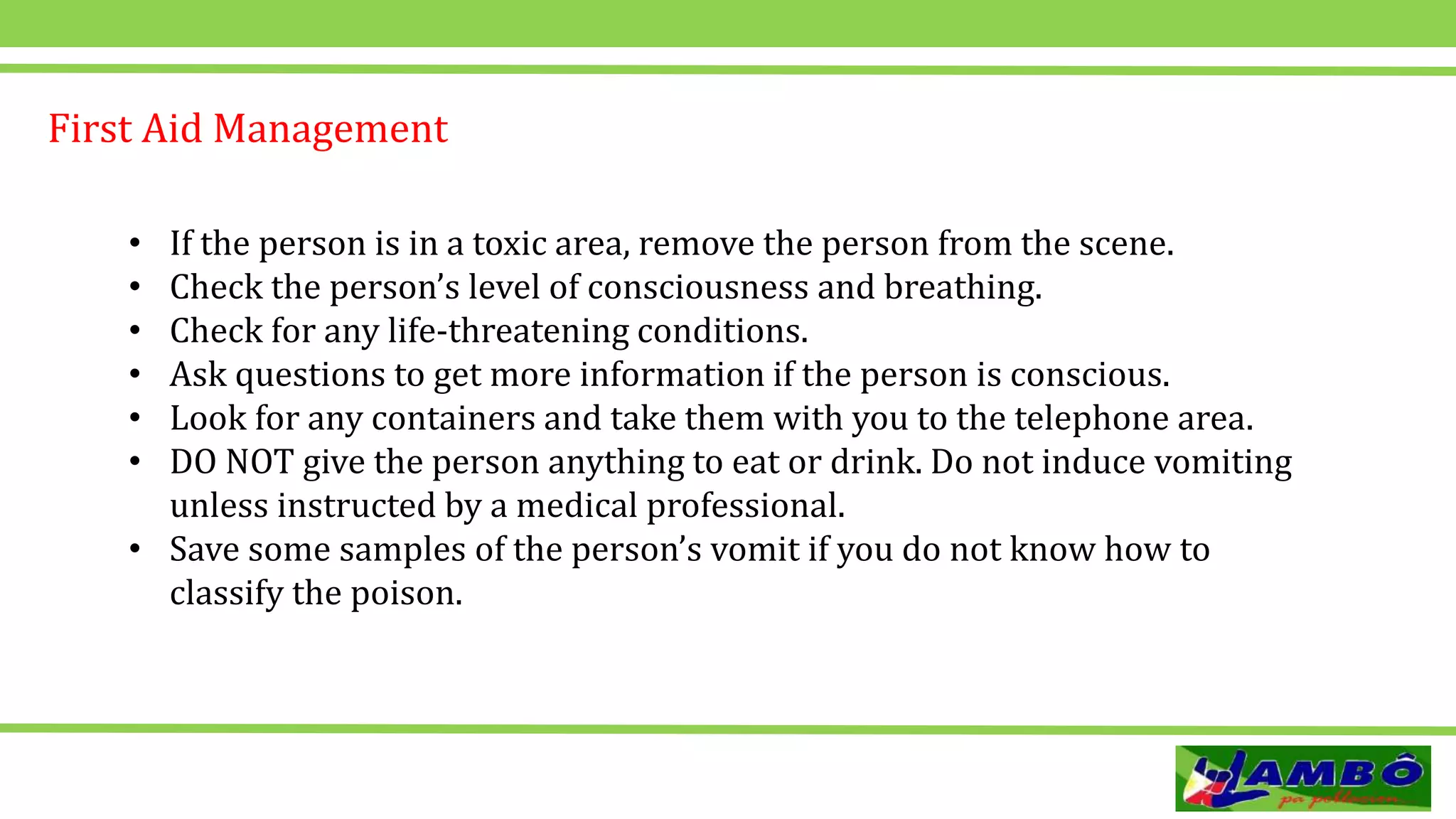This document provides information on basic first aid and medical emergencies. It discusses topics like first aid, basic life support, objectives of first aid, legal concerns, health hazards, prevention techniques, emergency action principles, scene size-up, primary and secondary assessment, various medical emergencies like heart attack, airway obstructions, poisoning, head injuries, and environmental emergencies like heat-related issues and hypothermia. It provides guidance on recognizing these conditions and outlines appropriate first aid management steps to take.
